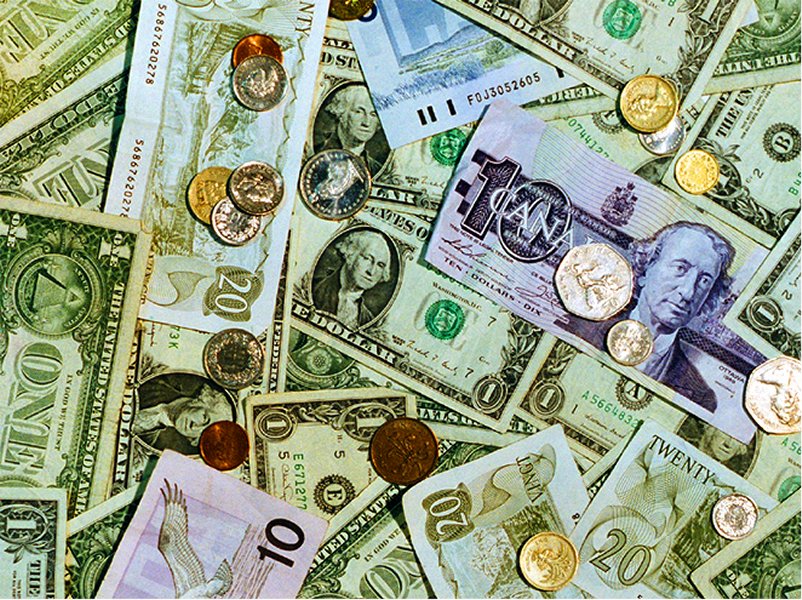Dollar Firms on Hump Day, but does it have Staying Power ?

Please note that we are not authorised to provide any investment advice. The content on this page is for information purposes only.
The US dollar is trading higher against the major currencies. Many observers are attributing dollar’s gains yesterday and today to comments from Yellen. We are concerned that this is not a fair interpretation of Yellen, or necessarily of the market.
The US dollar is trading higher against the major currencies. Many observers are attributing dollar’s gains yesterday and today to comments from Yellen. We are concerned that this is not a fair interpretation of Yellen, or necessarily of the market.
First, the most direct impact of more hawkish signals from the central bank would be in the interest rates not necessarily the foreign exchange market. The implied yield of the June 2015 Fed funds futures contract rose 2 bp yesterday. It is near the middle of the 10 bp range that has confined it since the beginning of Q2. Similarly, the implied yield of the March and June 2015 Eurodollar futures contract rose 1.5 bp yesterday toward the middle of their recent ranges. The 10-year yield was unchanged.
Second, we do not think Yellen provided a fresh policy clue yesterday. There is still significant slack in the labor market, and accommodation is still needed. The reference to tightening sooner and more was a risk scenario. We recognize that the Federal Reserve has tended to over-estimate growth, it has under-estimated the decline in the unemployment rate.
However, what is not being fully appreciated is that Yellen has de-emphasized the unemployment rate. In its place, she has talked mentioned several other metrics, like the length time spent unemployed, the number of people who take part-time jobs because they cannot find full-time work, the hire and quit rates (JOLTS) remains well below pre-crisis levels, and earnings. She also has also referred to the decline in the participation rate among prime working age people.
At the same time, the Federal Reserve has been criticized by some because it has been too transparent and that this gives rise to a false sense of security and facilitates mis-pricing of risk. Yellen seemed to respond to this by trying to inject some uncertainty. There have been many false dawns and the Fed’s ability, like any prognosticator, to forecast the world’s largest economy is limited. The economic outlook is uncertain, so the timing of future rate hikes is also uncertain.
Yellen can be expected to send a similar message in her testimony today before the House. Her prepared remarks are the same. The questions may be different, but the answer will be the same.
The UK is having similar issue in terms of its labor market. Some signs point to tightening of conditions. Today the ONS reported the claimant count fell 36.3k in June, the largest decline since February. The May decline of 27.4k was revised to show a fall of 32.8k. The ILO measure of unemployment slipped to 6.5% from 6.6%, a new five-year low.
Yet earnings growth continued to dry up. The average weekly earnings (reported on a 3-month year-over-year basis) rose a miserly 0.3% in May, down from a revised 0.8% in April (originally 0.7%). This seems to negate some of the heightened inflation concerns spurred by the higher than expected CPI report. The implied yield on the March 2015 short-sterling futures contract has slipped two basis points today after rising six yesterday.
The other economic news of the day came from China, which reported data that was largely in line expectations. The economy expanded by 2% in Q2 after a 1.5% pace in Q1 (revised form 1.4%). It is the first acceleration in three quarters. At a year-over-year basis, Q2 GDP rose 7.5% after 7.4% in Q1. Separately it reported retail sales (12.1% year-over-year), industrial output (8.8%) and fixed asset investment (17.3%).
The stabilization of the Chinese economy took place with the help of government efforts that accelerated spending and allowed greater lending. We note that aggregate financing accelerated in H1 to CNY10.55 trillion from CNY7.14 trillion in H2 13. Some infrastructure spending was brought forward; reserves were selectively cut, regulatory definitions of loan-to-deposits were tweaked.
Separately, recall that China’s National Petroleum Company that had stirred controversy earlier this year by placing a oil rig in waters disputed by Vietnam two months ago. It has now signaled its exploratory work is done and it was removing the rig. This seems to be among the first developments that we have seen that may ease some tensions in the region.
The Bank of Canada meets today. Within its neutral stance, it has leaned to the dovish side. However, today it may remove the dovish tint. The downside risks to inflation have arguably eased and the housing market appears to be accelerating. Existing home sales rose to a 4-year high in June. Sales are up 11.2% year-over-year, and prices are up almost 7%. Permits , construction and sentiment have all shown renewed momentum.
In addition to Yellen’s testimony, there is a slew of US data: PPI, TIC, industrial output, capacity utilization and the Beige Book. From a high level, so-called pipeline inflation is not a problem and yesterday’s softer than expected imported prices translates into a little downside risk for PPI estimates (0.2% on headline and core). Industrial output and manufacturing are expected to have both expanded by 0.3%. The color from the Beige Book that will be most interesting is about the labor market.
Dollar Firms on Hump Day, but does it have Staying Power? Is republished with permission from Marc to Market.




